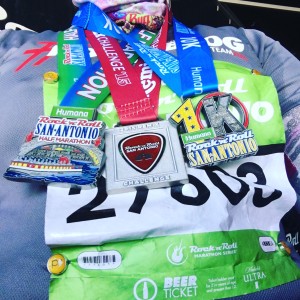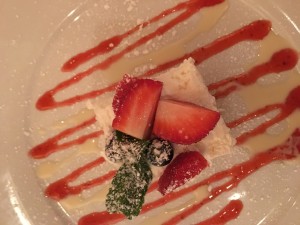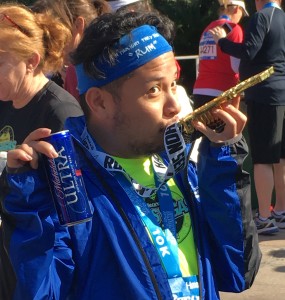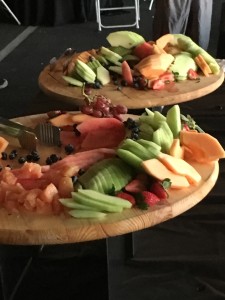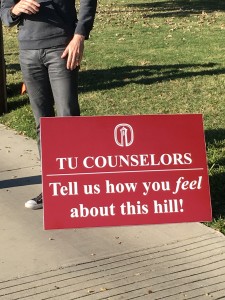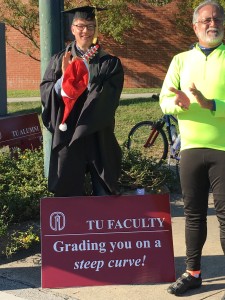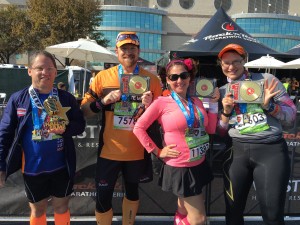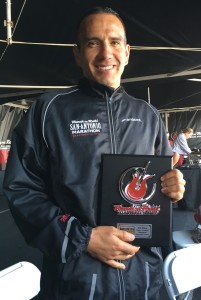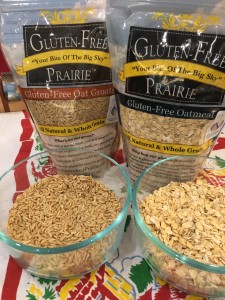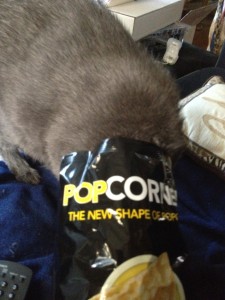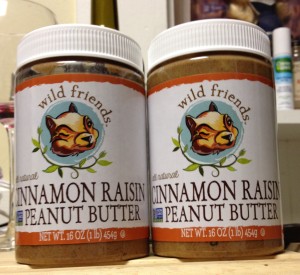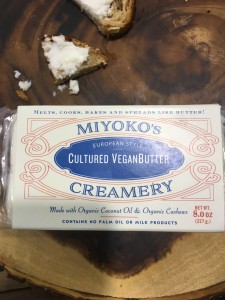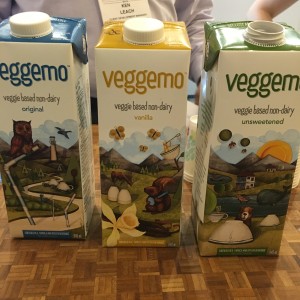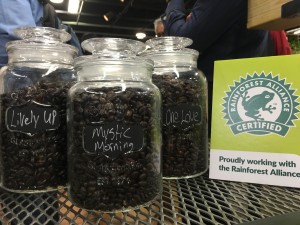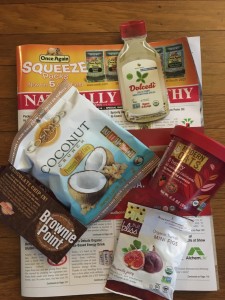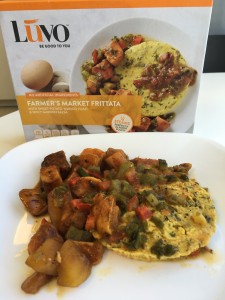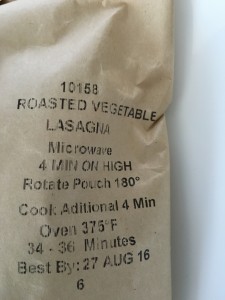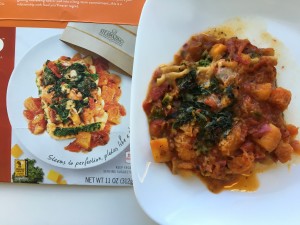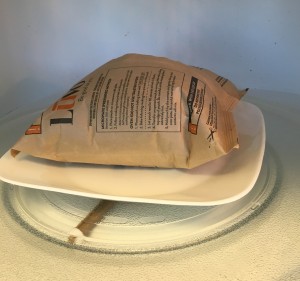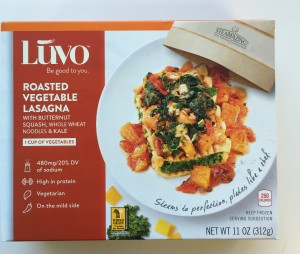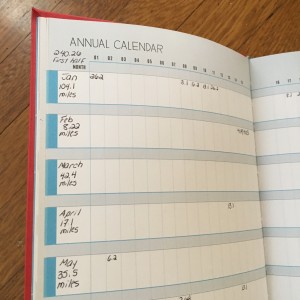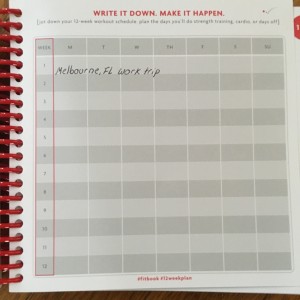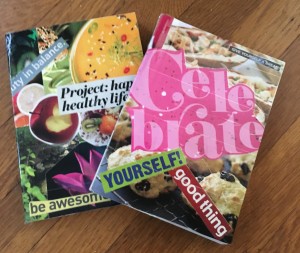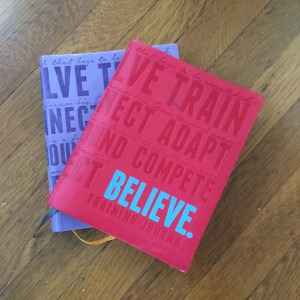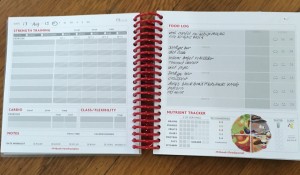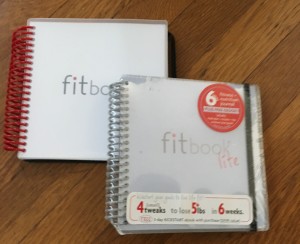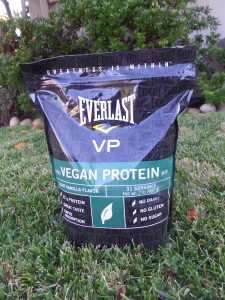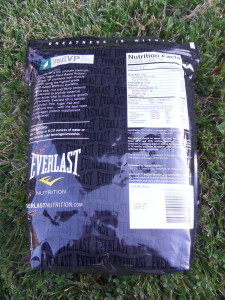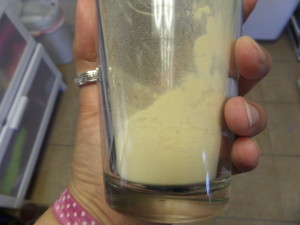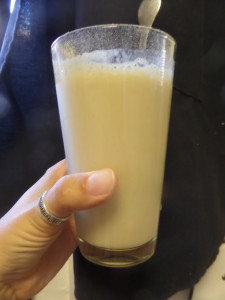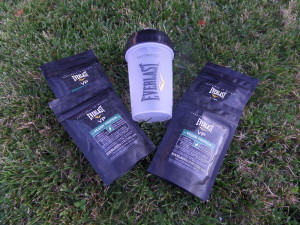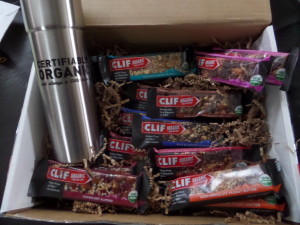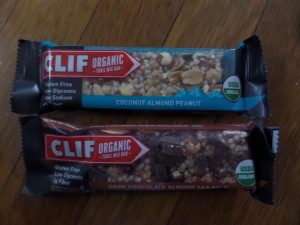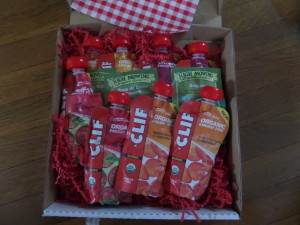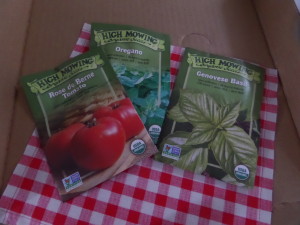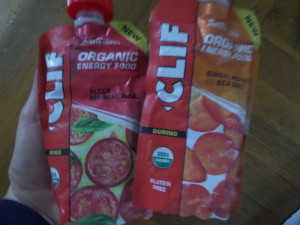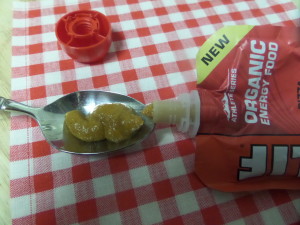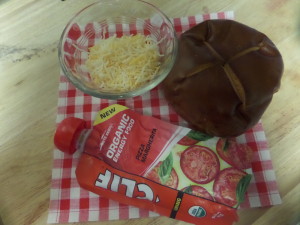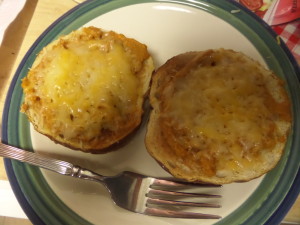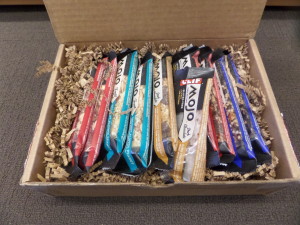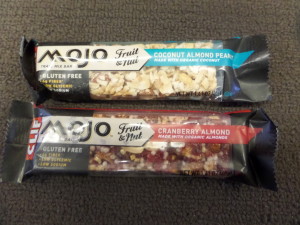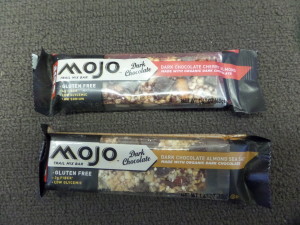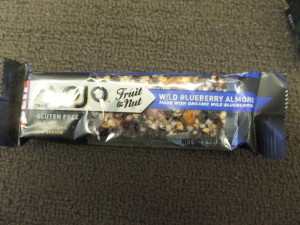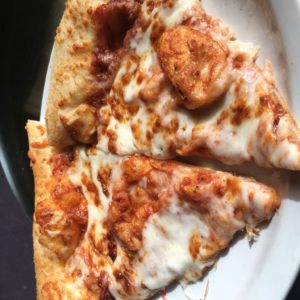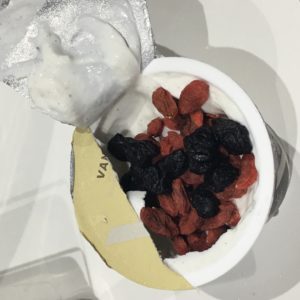Disclosures: (1) I received an advance copy of The Food Babe Way. In consideration for the advance book, I committed to review the book. I was not asked to say (or refrain from saying!) anything. (For the record, I would never accept anything for review that required me to include specific content in my review and pass it off as my opinion.) Prior to receiving the advance copy, I had ordered a copy through Amazon.com All opinions in this review are my own. (2) I have monitored Ms. Hari’s blog, Food Babe, for several years and have signed some of her petitions asking food manufacturers to disclose ingredients or reformulate products without certain ingredients.
In order to evaluate a book review, you need to know a little bit about the reviewer and the reviewer’s bias. The following points may help you evaluate my opinions on this book:
- I’ve spent a lot of time in school and otherwise immersed in academic writing. Nutrition and food fascinate me, and I’m studying for a nutrition certification with Precision Nutrition. I read research and papers on topics that interest me for fun. My job requires me to read voluminous medical records and published medical studies. When evaluating claims, I want to read published studies and reports as well as criticism of them. Not every claim has been scientifically studied, of course, but I want to read the state-of-the-art whether that is peer-reviewed research or the pros and cons of an untested theory.
- Food is not just “fuel,” because what your body builds and rebuilds itself by using the food you eat. “You are what you eat” is more than a trite saying, it is a scientific truth. I’m not suggesting that you’re going to turn into a chickpea, but if you eat a chickpea, your body will act like the Star Trek’s Borg and assimilate it. (Science and science-fiction in one sentence! Nerd alert!)
- I believe people have the right to know what is in the food they are eating. I think every ingredient in a food product should be on the label. I think packaged food should be much more regulated than it is in the United States (as it is currently much more highly regulated in Europe, for example, and the economy hasn’t died). Realistically, very few people are going to just stop eating all packaged or processed food and for some–including those living in domestic violence shelters or other situations without access to refrigeration–it is impossible.
- Not every “chemical” is a “toxin” or “poison” that deserves a bunch of hype. I understand that “chemicals” include things that are beneficial and that I absolutely want to consume every day. (Dihydrous oxide, anyone? Bottoms up!) I understand that heavy metals are harmful to human health when present in large quantities, and that heavy metals occur naturally in even the best soil and thereby become part of plants. Whether something is a “toxin” often depends on the dose; it is possible to die from drinking too much water, for example, and eating apple seeds (which contain a trace amount of arsenic) is not harmful to health over the long term. Further, some substances–such as fluoride–are still hotly debated and there is a lack of scientific consensus on their use. Finally, your body uses the digestive system, including the kidneys and liver, to remove the majority of “toxins” from your body. The easiest way to “detox” is to drink water, get some exercise, and stop putting “toxins” into your body. (People trying to sell you a juice cleanse, detox cleanse, herbal cleanse, herbal detox, etc. just want your money.)
- I’m aware that the word “natural” is not legally regulated on product or food packages, and that manufacturers can use the word “natural” on product labels to mean anything they want. Not all “natural” things are good for human beings to eat, drink, or breathe. Crocidolite asbestos and arsenic are both “natural” by just about any definition of the term, but I don’t want either in my food.
- As for GMOs, whether you believe that eating them is harmful to humans doesn’t matter to me. There are plenty of other reasons not to eat GMO foods, including, for example, my extreme distaste for Monsanto’s actions in and out of the U.S. and Canadian courts, and the fact that GMO crops are designed to be doused with pesticides (the opposite of the organic farming methods I’d like to see take over the majority of food production).
Let’s Review A Book!
Since the majority of this review is turning out to be constructive criticism (with very little cheerleaderage in there), I want to point out that I like this book. This book does three specific things that I find valuable. First, it encourages readers to think about what they eat, read labels, and make deliberate choices. Second, it provides an example (granted it is the author) of one person who changed her eating habits and benefitted from it. Third, the most important part, this book outlines very specific steps the reader can take to improve food habits.
Is this a good book? That depends on your criteria for a “good” book. If you want to know where Vani Hari (aka Food Babe) comes from, her personal experience with food and changing her food choices, specific steps Ms. Hari recommends for changing eating habits, and some tasty recipes, this is a great book. If you are looking for an in-depth treatise on nutrition, or a scientific explanation that cites every study in favor of food additives as well as those against it, this isn’t your book. Ms. Hari is a food blogger, not an ivory tower academic, and a person with strong opinions–she makes absolutely zero pretense to be an unbiased journalist.
At the outset, I’m not a fan of the book’s full title, The Food Babe Way: Break Free from the Hidden Toxins in Your Food and Lose Weight, Look Years Younger, and Get Healthy in Just 21 Days! I’m sure the editors and publishing house had a great deal of say in this, as their job is to market the book and sell books. Also, from reading about advertising, public relations, and the book industry, I’m aware that books that promise to deliver a result within a specific number of weeks or days sell very, very well. (Examples: The 7 Habits of Highly Effective People, 10-Day Detox Diet, 40 Days to Personal Revolution.) Book marketing experts suggest making a big promise in the title to help sell the book. (See “Book Marketing, the 10 Commandments of Nonfiction Book Title Success” by Roger C. Parker, on bookbuzzr.com He also recommends the numbers strategy.) Personally, I think the subtitle hurts Ms. Hari’s big-picture message, which is about making informed food choices and creating food habits that are sustainable in the long term. It also begs to have the credibility questioned due to the big claims and use of “Hidden Toxins.” Seriously, even my eyes rolled when I saw that! At least they didn’t try to put the word “diet” in the title. (I hate the word “diet,” but that is a topic for a separate post.)
One of the things that sets Vani Hari apart from other food bloggers is that when she publishes a post (or “investigation”) dedicated to a specific topic, she doesn’t just rely on fear-mongering (chemicals!) or her own opinion (it’s bad!). Instead, she takes the time to do some research on her subject. For example, in her February 5, 2015 post regarding the use of BHT in breakfast cereals, Ms. Hari backs her claims with citations to outside sources. Even if you disagree with the politics of the Environmental Working Group, the citation she provides is to their summary of publications about BHT, which includes the information necessary to go read those publications yourself. She also cites to articles available via PubMed, including one from the Oxford University publication Carcinogenosis, and articles available via Wiley; there are also citations to publications by the European Food Safety Authority (a European Union agency). You can click on the citations and go read the research–you can see for yourself if Ms. Hari is blowing smoke or accurately representing the research. That’s transparency, and it is a good thing. (See “Kellogg’s & General Mills: Drop the BHT From Your Cereal – Like You Do In Other Countries!” at Food Babe.)
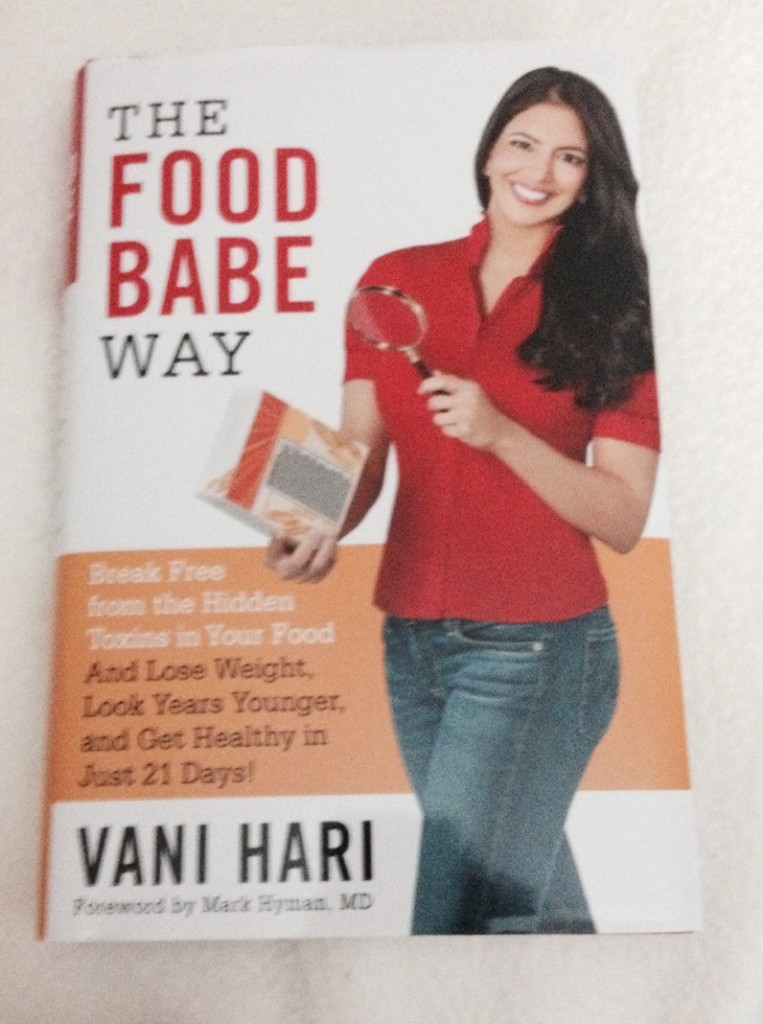
But let’s talk about the actual book now, right?
The Foreward by Mark Hyman is very complimentary, yet the excessive hyperbole–comparing Ms. Hari to Rachel Carson and Marin Luther King Jr.–is a bit much. Dr. Hyman made a more apt comparison when he described Ms. Hari as “a modern-day David, facing the Goliath of the trillion-dollar food industry[.]” Since Ms. Hari cites his work and lists his books in the recommended reading list, it looks a little mutual-love-festy. Meh. I’m not sure that anyone but me and the other dyed-in-the-wool nerds actually reads forewards anymore, so let’s move along.
The Introduction begins en media res, just as any good tale should (at least according to what I learned in my college literature classes): with Ms. Hari in a conference room trying to convince Kraft Foods to take the artificial dyes out of their macaroni and cheese in North America. (As she points out, they had already done this in Europe, so it wasn’t some impossible quest.) Ms. Hari is very opinionated and refers to the artificial dyes as poison and chemicals, which is a legitimate point of view–they are petroleum products that can cause allergic reactions–but starting the book out this way is going to turn off a large percentage of potential readers. It’s clear to me at the outset that this book was written specifically for the “Food Babe army” (people who read Ms. Hari’s blog or follow her on social media and often join her in petitions to change the way processed foods are made) and not to convert the unbelievers. The Introduction continues with a brief before and after of Ms. Hari. It explains how she ate growing up as a kid, and later as an independent young adult. You learn how she got the name “Food Babe” and how she attributes positive changes in her life and body to radically changing how she ate (basically moving from eating mostly fast food and packaged foods while drinking tons of soda, and towards eating mostly whole and unprocessed foods while drinking tons of water and some teas). Like any good social media offering should, the Introduction ends with a “call to action,” first by asking questions (e.g. “Do you find yourself unable to focus during the day?”) and then by making promises (e.g. “I will show you how to…Develop twenty-one positive, everlasting habits, a day at a time, that will get you off chemical-laced food.”)
Part I: THOSE TRICKY SONS OF…
Chapter 1. Easing readers into the “why” behind the call to action, Ms. Hari continues with stories about the ingredients in Yogoforia, Chipotle, Chik-fil-A, and Subway. She also tells how she ran for a delegate seat to the Democratic National Convention so she could start a conversation about genetically modified organisms (GMOS). In the two days since the book launched, I’ve read multiple criticisms of Ms. Hari’s extremely simplified explanation of what a GMO is, but I have read zero criticisms of the reason Ms. Hari gives for fighting GMOs: “Genetic modification is done to make a fruit or vegetable more hardy or impervious to the application of specific pesticides. These pesticides are linked to myriad diseases.” Unfortunately the end notes don’t include a citation to back that claim. I’m not bothered by this because I’ve listened to enough radio reports on asthma, lung ailments, and cancer in the farmworkers of California’s Central Valley, where pesticide application is epidemiologically linked to these health problems. (Remember Cesar Chavez and the grapes, anyone?) Further, I’d add (because Ms. Hari does not) that pesticides don’t just “go away” after they are sprayed on crops or rinsed off of produce, and there are more sustainable farming methods available to us. After explaining why she targets food companies instead of the government, she gives a super-short history of the FDA. (For a longer, more thorough explanation with a more neutral tone, I highly recommend reading Pandora’s Lunchbox by Melanie Warner. Ms. Hari cites it in Appendix B: Recommended Reading and Resources, and I found it a quit and easy read.)
Chapter 2 focuses on what Ms. Hari calls “The Sickening 15.” These are:
1. Growth Hormones in Meat
2. Antibiotics
3. Pesticides
4. Refined and Enriched Flour
5. Bisphenol (BPA)
6. High-Fructose Corn Syrup (HFCS)
7. Artificial Sweeteners
8. Preservatives
9. Trans Fats
10. Artificial and Natural Flavors
11. Food Dyes
12. Dough Conditioners
13. Carrageenan
14. Monosodium Glutamate (MSG)
15. Heavy Metals and Neurotoxins
This section is overly ambitious in the amount of material it tries to cover. Each of the 15 gets just a cursory treatment (though there are citations relevant to some of them in the end notes, but most people won’t read them). Some of the items on this list are pretty easy and don’t require a lot of space to convince most people they probably don’t want to eat them. For example, BPA, MSG, and trans-fats have been widely covered by the news media, and it’s going to be hard to find anyone who actively promotes eating antibiotics and pesticides or something called a “neurotoxin.” (Side note: Ms. Hari puts the hotly debated fluoride in this category, right in between ethanol and lead and along with arsenic PCBs, and DDT.) A few of the other categories are much less convincing.
Let’s take #4, for example. Ms. Hari gives a two paragraph critique/explanation. First, this flour is stripped of its fiber and nutrients during processing, and the manufacturers then add “synthetic nutrients” back in, and may bleach it to obtain a whiter color by using chlorine or peroxide. Second, “a number of breads are loaded with added sugar to make them taste better.” A critical reader is not going to find this a convincing reason to put white flour on the same list as pesticides. I get that the fiber is taken out and Americans have notoriously low fiber-intake. To be more convincing, I would like Ms. Hari to explain why “synthetic” nutrients are inferior to non-“synthetic” nutrients. While it sounds scary to say the flour is then bleached with chlorine or peroxide, is there any evidence that chlorine residue or peroxide residue remains in the finished ingredient (flour) or product (bread or other baked good)? If so, is there any evidence that chlorine or peroxide residue is harmful if eaten? I mean, I’m CERTAIN that I’ve swallowed some swimming pool water so surely I’ve gulped down in a few mouthfuls of pool water more chlorine than is in a slice of Wonder bread. As for peroxide, I used a home remedy mouth and tooth wash after getting my wisdom teeth removed that contained (among other things) hydrogen peroxide. Wouldn’t two weeks of brushing with that concoction give me a higher dose than eating a muffin? Finally, the entire second paragraph is about sugar added to bread, not about what makes “refined and enriched flour” something to leave out of my diet. (Though that–and “the Food Babe Way” paragraph following it–are good arguments for avoiding junky white bread and reading labels.) While there is more information on white flour later in the book in the section about choosing carbs, it really belongs here, where it might encourage someone to read far enough to get to the section about choosing carbs.
To be clear, I am not a giant fan of refined and processed white flour. I think Ms. Hari is right on the money, but could have done a much better job of explaining it and documenting the state of the science and nutritional knowledge.
Chapter 3‘s title, “Cut Out the Chemical Calories” is, again, an indicator this is preaching to the already-converted. Over-reliance on the word “chemical” is a legitimate criticism of this book. (I would have called this chapter, “Cut Out the Fake Food.” Not that anybody asked.) This section is again overly ambitious, in that it attempts to cover a large amount of territory in a small amount of space. As a result, the quality of the information presented is somewhat uneven. The topic of obesogens gets a mere two pages (of which only two and a half paragraphs explain it), sufficient to potentially induce panic or fear but insufficient to provide an education. The claim that fructose is “metabolized in the body like a fat,” is not exactly true. (See: “All About Fructose” by Ryan Andrews at Precision Nutrition.) Fructose is initially digested like any other monosaccharide, though it has some unique properties. Fructose is then metabolized exclusively in the liver, where it can be converted to glucose derivatives and eventually stored in the liver as glycogen. Because the liver has a limited amount of space to store this glycogen, any excess fructose will be stored as fat. As Mr. Andrews explains, “a very high single-serving dose of fructose is much more likely to find a home around your middle.” Hopefully Ms. Hari will correct this in subsequent editions of the book, explaining that due to the manner in which it is metabolized in the liver, fructose is more likely to be stored as fat than used as energy.
One area where Ms. Hari could have saved space is in her critique of various “diet” plans, as her criticisms of the various diets are basically the same (i.e. all can include GMOs, pesticides, and those nasty “chemicals” and for those that include meat they can include antiobiotics). She could also have omitted every one of the sections titled “the chemicals you might eat on this diet” as with the exception of raw foods and paleo, each one is just another example of how processed foods contain a wide variety of additives that we might want to reconsider eating. This wasn’t particularly helpful or persuasive. By skipping this section, Ms. Hari could have spent more time clearly explaining obesogens and presenting more of the science and facts about the “Sickening 15.” By the way, may of Ms. Hari’s critics have written Amazon reviews that claim nothing she says in the book is backed by research. This clearly indicates they have not read the book, which includes 10 pages of end notes in Appendix D. I assume the choice to use end notes instead of footnotes was made by the publisher, as many readers are turned off or intimidated by footnotes. Personally I find it unfortunate, as it means critical readers have to constantly flip from the chapter they are reading back to the end notes to determine whether there is a note applicable to the fact, claim, or recommendation they are reading.
Part II: 21 Days of Good Food and Good Habits
This section is broken up into three sections that roughly translate to habits around drinks, habits around food at home, and habits around food elsewhere (e.g. travel, grocery store). Think of it as eat, drink, and be merry. (Or in order, drink, eat, and be merry.) These are a set of 21 habits Ms. Hari personally practices and recommends. It is set up so the reader can add one new habit each day for three weeks.
Chapter 4: “Fluid Assets for Food Babes.” The first seven habits can be summarized as follows: (1) warm lemon water each morning; (2) green juice or green smoothie daily; (3) NO drinks with meals (also don’t chew gum and maybe drink ginger tea); (4) “Be Aware of What’s in Your Water” (filter all water, also applies to showering); (5) eat less dairy; (6) quit soda; and (7) “Love Your Liver” (a discussion of alcohol, including additives in beer). In principle, I think most people who are on board with consuming fewer additives (or avoiding the “Sickening 15”) would be on board here. Drink more water? Get some of your greens in by hiding them in a drink? Quit soda? Of course! We all know we should be better at hydrating ourselves, right? And if you want to avoid hormones and antibiotics, conventionally produced dairy is a good way to start. All of these recommendations sound like fine and healthy habits to me. At the minimum, even the most conservative reader or the most voracious critic is going to have a hard time arguing any of these habits are harmful.
While none of the habits recommended in this section are actually harmful, this is an area where the skeptics are going to have a “Where’s the science?” field day. For starters, there are no citations to back up the claims Ms. Hari makes in the chapter on drinking hot lemon water or apple cider vinegar.
- Of the six citations in the end notes, two are to The Townsend Letter, a source of dubious credibility and quality: (1) content includes articles on practices not backed by any science, such as iridology; (2) the doctor who maintains Quackwatch.com lists it as “not recommended;” (3) the publication website admits in the disclaimer that “We encourage reports which frequently are not data-based but are anecdotal. Hence, information presented may not be proven or factually correct.”; (4) publisher and editor, Dr. Jonathan Collins, has been publicly criticized for using chelation therapy (FDA approved for treatment of mercury and lead poisoning) for vascular disorders (See http://www.ncahf.org/nl/1996/7-8.html) but there is no evidence that chelation therapy is effective for this use, according to the Mayo Clinic (see http://www.mayoclinic.org/tests-procedures/chelation-therapy/basics/definition/prc-20013013).
- A third citation from a more than dubious source is to the Gerson Healing Newsletter, which is published by the Gerson Institute, which describes itself as ” a non-profit organization located in San Diego, California, dedicated to providing education and training in the Gerson Therapy, an alternative, non-toxic treatment for cancer and other chronic degenerative diseases.” (Text taken from http://gerson.org/gerpress/about-us/). Yet Gerson Therapy, which includes coffee enemas, juicing, and supplements, hasn’t proven to cure cancer, and has caused life-threatening infections via their treatments. (See http://www.quackwatch.org/01QuackeryRelatedTopics/cancer.html for a thorough explanation and citation to sources of underlying facts.) So that’s 3 out of 6 references that are untrustworthy.
- A fourth reference is to Reverse Aging, a book that recommends drinking alkaline water (not acidic water like lemon water) and isn’t a worthy reference even on the topic of “reverse aging.” (See The Healthy Skeptic by medical journalist Robert J. Davis, especially chapter 9 and “Position Statement on Human Aging” written and joined by a crowd of MDs and PhDs published in the Journal of Gerontology at http://www.ncbi.nlm.nih.gov/pubmed/12145354?dopt=Abstract or http://www.quackwatch.com/01QuackeryRelatedTopics/antiagingpp.html).
- That leaves us with the only two citations for the entire chapter that have any merit:
- One, an article from the peer-reviewed European Journal of Clinical Nutrition, “Vinegar supplementation lowers glucose and insulin responses and increases satiety after a bread meal in healthy subjects.” Nothing at all to back the claims about drinking warm lemon water or apple cider vinegar every morning (and who eats “a bread meal”??).
- Two, an article from the Environmental Nutrition newsletter, “Pucker up for lemons and limes: tart, refreshing and healthful.” Unfortunately this article is only available to subscribers, so I wasn’t able to see more than the first paragraph. I actually found two articles with this title, both of which appeared to have recipes.
I spent about an hour with Google, PubMed, Precision Nutrition, and WebMD, looking for any publications to back the claims about drinking lemon juice and came up with nothing. What I don’t understand is why Ms. Hari didn’t either cite to a respected publication about Ayurveda or interview an Ayurvedic clinician who also teaches; drinking warm lemon water in the morning is a practice I recognize as recommended by some yoga teachers and Ayurvedic practitioners. No, this is not the same as providing a citation to peer-reviewed, published research, but as others will point out if I don’t: who is going to fund and conduct a study on drinking lemon water? (You can’t patent it. You can’t put it in a pill and sell it.)
Does this mean there is no benefit to drinking lemon water in the morning? NO! In fact, I’m actually going to try it out for a few weeks and see how it feels in my body. It seems logical that starting the day by hydrating is a good thing, since sleeping means hours spent losing water through respiration and not taking in any fluids. Since dehydration is often confused with hunger signals, I’m not at all surprised to read individual anecdotal reports that people ate less after adding more fluid to their bodies. At least one article I read hypothesizes there might be a psychological effect, in that starting the day with what feels like a virtuous act may encourage you to make better choices throughout the rest of the day. Plus hey, it tastes nice.
As for apple cider vinegar, I think it is lovely in salad dressings. Alas, WedMD reports there is insufficient evidence to support health claims. See Apple Cider Vinegar. If you really want to drink it, go right ahead–just be sure to dilute so you don’t get an unpleasant burning sensation in your mouth/throat or take the enamel off of your teeth.
Two more points I’d be remiss without addressing.
One, in the section that discusses drinking more water–specifically filtered water–Ms. Hari also recommends installing water filters for the shower/bath. Initially this sounded a little extreme to me, but then I rent a place connected to plumbing laid down in the 1950s that does all it can just to pump the water to my house, and I have neither permission nor incentive to install water filters. (Also, I’ve read my local water utility reports on water quality, and investigated where my water comes from and how it is processed.) Setting that aside, if you are worried about additives and chemicals in your bath water, you’d probably better step out of the bath and examine the bath products, soap, shampoo, conditioner, hair spray, cosmetics, and other lotions and potions you apply to your skin. You think processed food is complicated? It doesn’t hold a candle to beauty products! (If you are interested, check out Look Great, Live Green: Choosing Bodycare Products that Are Safe for You, Safe for the Planet by Deborah Burnes and start making your own body care products.)
Two, in the part about reducing dairy intake, Ms. Hari recommends raw milk, which is unpasteurized (non-homogenized) milk. She does not even pay lip service to the potential hazards of raw milk or explain what pasteurization is or why milk in this country is generally pasteurized. Since she didn’t explain, I will. Pasteurization is a process that prevents infected milk from entering the food supply. The process was invented after the initial discovery of germ theory in the 1890s. The idea was that treating the milk would prevent the milk from spreading diseases from cows to humans. Before we had a way to test milk for bacteria, pasteurization was the best way to prevent diseases from spreading. Unfortunately, the old version of “Big Food” wasn’t any more trustworthy than the modern one, and after the discovery of tests to determine which cows were infected with things that could be passed on to humans there were some unscrupulous farmers who lied and falsified test results, so unpasteurized milk still had a decent chance of passing on a disease or two.
Now we know that E coli, Listeria, Salmonella, tuberculosis, diphtheria, thyphoid, strep, and other potential disease-causing organisms can be present in raw milk. These are especially dangerous to people with weak immune systems (including very young children, very old people, pregnant women, and those going through chemotherapy). That’s why the Center for Disease Control and Prevention, Department of Health and Human Services, and other agencies recommend those people avoid raw milk. This isn’t to say there is no safe raw milk in the world. (I find it very reasonable that Ms. Hari’s grandparents and neighbors, who shared a cow they had a vested interest in keeping very healthy, drank and cooked with that cow’s raw milk.) This IS to say that if you choose to consume raw milk, you need to be aware of the potential dangers and be very careful about where you buy raw milk and how you handle and store it. I also recommend you read the article, “Got E. Coli? Raw Milk’s Appeal Grows Despite Health Risks” in Scientific American, and keep yourself up to date on the state of the research regarding raw milk and the motivations for the political arguments on both sides of the raw milk debate.
Chapter 5: “Food Habits for Food Babes.” The next group of habits revolves around making better food choices. If you are following the 21-day plan, habits #8 through #14 are about making little changes in how you choose what to chew. Skip fast food? Makes total sense. Eat less sugar? Of course that’s a healthier habit! Get choosey about which meat you choose to eat (if you eat meat at all–I don’t)? Yes, all for it! Eat more fresh, raw produce? Great idea!
Again, there are many items that could be better researched, documented, and explained. Yes, cellulose is “the same ingredient that is in sawdust” [page 149] but it is also in kombucha (“The kombucha culture is a collection of yeast and bacteria encased in cellulose.” Precision Nutrition article, “All About Kombucha”) and in most plants, including plants you eat (see discussion in “All About Raw Food” on Precision Nutrition, and “All About Fiber” on Precision Nutrition, as well as any basic biology textbook). Day 9, “Detox from Added Sugar,” could be much better documented, especially regarding the potentially unhealthy effects of consuming artificial sweeteners. I know there are reputable publications because I’ve seen them. While Ms. Hari accurately points out that Truvia, the Coca-Cola Company’s “stevia sweetener,” also contains erythritol, she doesn’t point out that erythritol is actually the main ingredient! Day 10, “Eat Meat Responsibly,” spends more time explaining Ms. Hari’s relationship to meat than explaining exactly how grain-fed (factory farmed) beef differs nutritionally from grass-fed beef; this would have been a great opportunity to set out a more detailed explanation of the Omega-3 to Omega-6 ratio, foreshadowing Day 13’s focus on a healthy fat balance.
Since she spent half of page 69 dumping on the raw food diet, Day 11 (“Eat Raw More Than Half the Time”) would have been a great location to remind readers that the nutritional content of some foods increases when cooked (Ms. Hari cites carrots and tomatoes on page 69), set out those foods and some credible sources explaining why and how that is true. She also misses a prime opportunity to re-hook the reformed dieters in her readership with the fact that because raw produce has a larger volume than cooked food (or meat or processed food) with similar caloric value. Read: raw foods full up your tummy, triggering the satiety hormones that signal your brain to stop eating. I take issue with the Day 13 proclamation that “cooking oils are largely responsible” for screwing up the omega-3 to omega-6 relationship (because clearly factory farm, grain-fed beef–what’s in the processed food and fast food and even the butcher shops in this country–plays a gigantic role here). Also, Ms. Hari falls prey to the “coconut oil is healthy!” fad, without addressing the differences between what the only published research studied (coconut oil with a very high medium-chain fatty acid content) and what we can buy at the store (not so much with the medium-chain fatty acids). Day 14’s discussion of adding in superfoods could have referenced Mario Villacorta’s new book, The Whole Body Reboot: The Peruvian Super Foods Diet to Detoxify, Energize, and Supercharge Fat Loss, especially regarding pichuberries (which I suspect are the same as the “golden berries” discussed on page 209). I’m a little surprised Ms. Hari didn’t mention Energy Bits (a small U.S. company that produces algae tablets that are 100% pure algae and third-party certified GMO-free). Perhaps in the second edition? (Ms. Hari if you are reading this, I’d happily send you a sample of Energy Bits. I love them!)
There are some things that are done well too, of course. The day focused on carbs briefly addresses ancient grains, using zucchini and squash “noodles,” bean pasta (processed food, to be sure), and intact grains. Most people think “carbs” means “white bread and pasta” and don’t think beyond that to the better-for-you choices, like sprouted breads. Each time one of the new habits involved “taking away” something–like fast food–Ms. Hari points out a variety of substitutes or better choices. Plus there are recipes in the back of the book, but I’m getting ahead of myself.
Chapter 6: “Feats of A Real Food Babe” is the last piece in the third section of this book. This section is all about habits involving food choices and environments. It addresses GMOs, dining out, what to keep in the kitchen, the grocery store, cooking (as opposed to heating up things from packages), sleep (“fast every day”), and travel.
This section is where the very hands-on advice comes into play, and is probably my favorite of the three chapters in this section of the book. The pages on shopping provide concrete advice on how to keep the grocery bills down, directly contradicting the naysayers who complain, “eating healthy is to expensive!” For example, she points to private-label (“store brand” or “house brand”) options available at even Walmart and Target. She provides a list of priorities for choosing organic over conventional (to avoid pesticides, etc.) and refers to the Environmental Working Group’s “Clean 15” and “Dirty Dozen” lists for more information. Ms. Hari also provides a list of places to find coupons, online shopping choices, what to freeze, what to make from scratch to save; she also highlights strategies such as planning in advance (how many people do you know that either shop without a list or buy random things not on the list?), shopping at farmers’ markets, and CSAs.
Part III: The 21-Day Food Babe Way Eating Plan and Recipes
True confession: I’m not a big meal-plan follower. It’s a combination of things…I’m lazy (or busy, or tired, or whatever), I travel a lot for work, and I don’t like to cook on weeknights. If you are a fan of a plan, there are 21 days of meals set out for you, as well as a bullet point list of multiple snack options.
The eating plan starts out with a brief note on ingredients–guidelines for choosing the staples you need to cook (butter, flour, oils, soy sauce, etc.). There are more than 50 recipes for beverages, breakfast, lunch, dinner, snacks, desserts, and pretty much any other ordinary occasion you might want to eat. The recipes include relatively ordinary options that probably won’t scare your average American too much: sweet potato fries, lemon lime cooler, frittatas, tomato kale soup, white bean chili, mac ‘n’ cheese. There are also some more adventurous choices, such as My Perfect Green Juice, quinoa veggie scramble, carrot ginger salad dressing, Moroccan veggie and chickpea soup. None of the recipes calls for fancy cooking skills or complicated techniques. Most of them are limited to 6 or fewer steps, and include instructions to chop/slice/dice, heat/simmer/boil, and similarly familiar actions. The My Basic Green Smoothie recipe translates roughly to “throw this stuff in a blender and hit go.” These are non-intimidating recipes that should be accessible to most people, even some kids who are old enough to be trusted with sharp objects.
The End
When I was a kid, we wanted to stay up as late as possible. When the movie credits started to roll for The Wizard of Oz (a once-a-year televised treat in those pre-VCR days), we begged Mom to let us “watch the over part.” The appendices in this book are a pretty good over part.
Appendix A outlines the basic steps for creating an online petition to change the food system.
Appendix B is a list of recommended resources. The items on the list are principally things intended for popular consumption, such as Fast Food Nation by Eric Schlosser; the list of blogs is longer than the list of books. The recommended websites don’t include Pub Med (or even WebMD). The items on the list vary wildly in quality. It is my personal opinion that Ms. Hari’s continued recommendation of Dr. Oz and Dr. Mercola tarnishes her reputation and needlessly opens her to criticism. (For those who are unaware, a recent review of the advice and recommendations on the Dr. Oz show found that “For recommendations in The Dr Oz Show, evidence supported 46%, contradicted 15%, and was not found for 39%.” This study was led by Cristina Koronwynk at the University of Alberta and can be found at http://dx.doi.org/10.1136/bmj.g7346 Mercola, an osteopath–not MD–who has appeared on the Dr. Oz show much to the dismay of most of the medical profession, and has received repeated warning from the FDA to stop making illegal claims about the supplements and other devices he peddles on his website–which include a tanning bed and multiple types of vitamins. Read “FDA Orders Dr. Mercola to Stop Illegal Claims” on Quackwatch for the dates and descriptions of the FDA warnings, as well as other citations.
While there is a decent set of end notes, Ms. Hari does not clearly distinguish between and among peer-reviewed published research, published articles, studies, news articles, and publications that are editorial or opinion.
Appendix C is a chart listing companies and the amounts of money they contributed to fight bills for mandatory GMO labeling from Oregon, Washington, California, and Colorado. Since all bills are subject to unsavory amendments and additions or deletions, and many are poorly drafted at the outset, I would have liked to see the texts of these bills included. (I might be the only one though; I’m nerdy like that).
Appendix D is the bibliography/end notes
CONCLUSION
Writing a book is a TON of work. Vani Hari’s first foray into the book world is an ambitious attempt to cover a lot of material in one volume. While it falls short of my expectations in terms of fact-checking and documentation, I recognize that I’m trained to be a critical reader and that the vast majority of the Food Babe Army (and the rest of the world) is likely to find me a nit-picky rhymes-with-witch. (I’m good with that.) I’m excited to try out the recipes, and implement some of the suggestions for eating while traveling. I really do hope there is a second, expanded edition in which Ms. Hari edits and adds, explains and educates, and maybe reorganizes some of the contents a bit.
We need a reasonably sane “voice of the people” type of food activist on our side, the side of the people who need to eat and would to know what it is we are eating and how it might affect us. Publicly criticizing large, rich food manufacturers is not a recipe for popularity. It makes you a target. I’m glad there is someone willing and able to publicly take concrete actions. A big old-fashioned protest is nice, but mass mob scenes don’t get results. Focused and carefully thought out demands, backed by a small army of consumers, DO get results–as Vani Hari has demonstrated repeatedly.
Win a book!
Want to win a copy of The Food Babe Way? Since I now have two–the one I pre-ordered and the one I received to review–I’m giving one away. It’s an easy read, and even with all the things I criticized about the book I still think it is a worthy read. If nothing else, it is guaranteed to give you some new things to think about food AND some tasty recipes that are pretty easy to make.
a Rafflecopter giveaway
